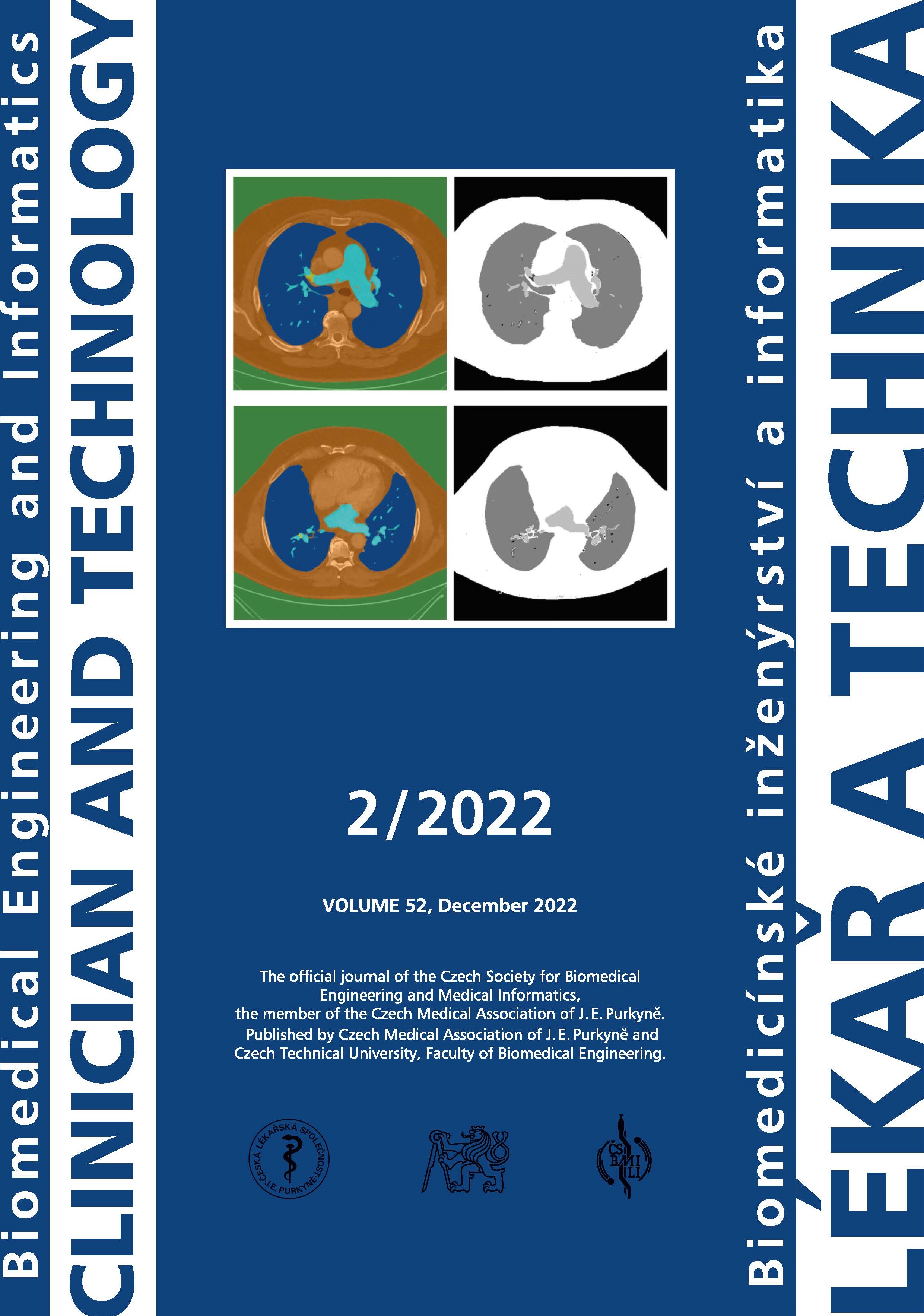EFFECT OF INSPIRATORY-TO-EXPIRATORY TIME RATIO AND AMPLITUDE OF OSCILLATIONS ON THE DEVELOPMENT AND MAGNITUDE OF DYNAMIC HYPERINFLATION AND HYPOINFLATION OF LUNGS DURING HFOV
DOI:
https://doi.org/10.14311/CTJ.2022.2.03Abstract
During high-frequency oscillatory ventilation (HFOV), a situation may occur where the mean alveolar pressure (mPalv) differs significantly from the mean airway pressure (mPaw). Studies documenting the differences between these pressures during HFOV have documented states of both higher and lower mPalv compared to mPaw. The effect of HFOV parameters on the pressure difference is not yet understood. The aim of this study is to investigate how this phenomenon is affected by the ratio of inspiratory to expiratory time and the amplitude of HFOV oscillations (ΔP). The effect of the listed ventilation parameters was investigated in vitro in seven laboratory models and in vivo on nine pigs. The study found that an inspiratory to expiratory time ratio of 1:1 always results in a positive pressure difference between mPalv and mPaw, referred to as dynamic hyperinflation. At an inspiratory to expiratory ratio of 1:2 this pressure difference is negative in the majority of in vitro models of the respiratory system and in all animals. In addition, the study found that the magnitude of the pressure difference is affected by the ΔP. There is a critical value of ΔP at which the trend of the pressure gradient between the alveolar space and the airways is reversed in relation to the oscillation amplitude.
Downloads
Published
Issue
Section
License
Copyright (c) 2023 Václav Ort, Karel Roubík

This work is licensed under a Creative Commons Attribution 4.0 International License.
Authors who publish with this journal agree to the following terms:
- Authors retain copyright and grant the journal right of the first publication with the work simultaneously licensed under a Creative Commons Attribution License (https://creativecommons.org/licenses/by/4.0/) that allows others to share the work with an acknowledgment of the work's authorship and initial publication in CTJ.
- Authors are able to enter into separate, additional contractual arrangements for the non-exclusive distribution of the journal’s published version of the work (e.g., post it to an institutional repository or publish it in a book), with an acknowledgment of its initial publication in this journal.
- Authors are permitted and encouraged to post their work online (e.g., in institutional repositories or on their website or ResearchGate) prior to and during the submission process, as it can lead to productive exchanges.
CTJ requires that all of the content of the manuscript has been created by its respective authors or that permission to use a copyrighted material has been obtained by the authors before submitting the manuscript to CTJ. CTJ requires that authors have not used any copyrighted material illegally, as for example a picture from another journal or book, a photo, etc. It is the author’s responsibility to use only materials not violating the copyright law. When in doubt, CTJ may ask the authors to supply the pertinent permission or agreement about the use of a copyrighted material.
The opinions expressed in CTJ articles are those of authors and do not necessarily reflect the views of the publishers or the Czech Society for Biomedical Engineering and Medical Informatics.


